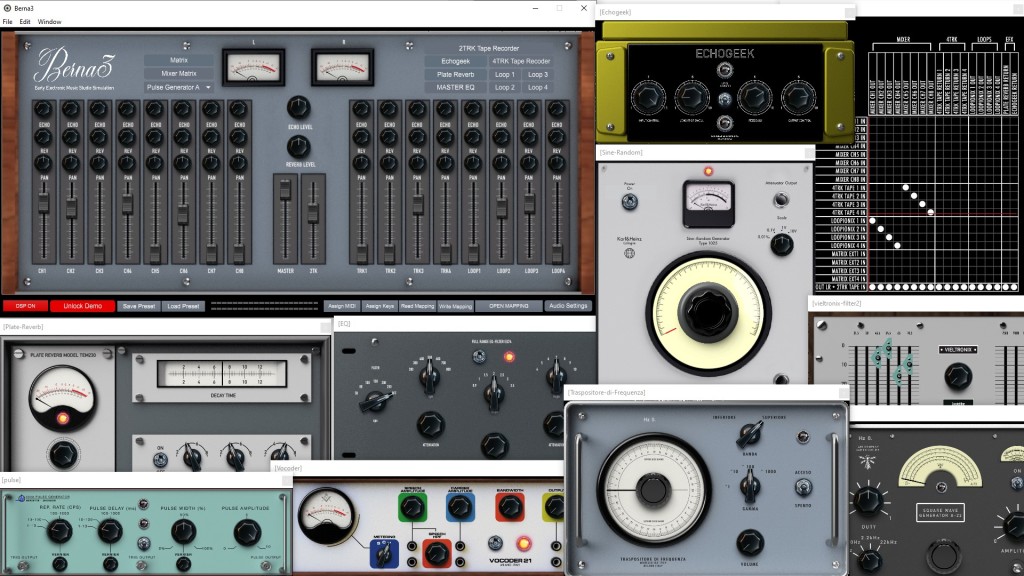Now your Windows PC can also enter the exciting world of sound synthesis of the 1950s. Here’s news on Berna3 for Windows, plus some tutorial content to get you up to speed.
Berna3 from Giorgio Sancristoforo is something truly special – a full music-making environment that recreates the look, sound, and workflow of the equipment used composers like Berio and Stockhausen. Down to the look of individual knobs and (now) the sound of particular gear, it allows a modern computer to do things that previously were known only to users of the RAI Italian National Radio and Television studio and the WDR’s Elektronische Musik Studio of Cologne in Germany.
Early versions were already significant enough that they were adopted in university courses, but your interest need not be only academic. Just hooking up an oscillator is a pleasure now, thanks to extravagant work Giorgio did on sound modeling and graphics. It’s sonically inspiring, partly because of the unique and possibly unfamiliar ways you get to work. And the results are a must for anyone interested in synthesis – even digital software or Eurorack – as you see the roots of modulation and patching.
It’s the musical equivalent of getting a time machine and going back to hang out with some $#&*( Pterodactyls flying around and T. Rex stomping through the jungle. Academically, compositionally, it’s essential, yes. In practice, the weirdness is a thrill.
I took us on a tour of the equipment there in the last installment of coverage on Berna:
Berna3 does Windows
Now, you get Windows support, too. And they’ve done some work to make this feel Windows-native. There’s full support for inter-app audio and MIDI, too, as well as the usual MIDI and TouchOSC virtual driver and all of that.
Just one trick by way of warning – the installer will give you an option for installing two different Virtual C++ runtimes. If you have a fair bit of software on your machine, you can probably safely uncheck these; I’d even go as far as leaving them unchecked first. (You can double-check by going to Settings > Apps & Features and look for the prerequisites.) I blindly checked them and the installer got in a loop where it would keep restarting, then try to reinstall each Virtual C++ again, and ask to repair/or uninstall but wouldn’t complete. Giorgio explained to me not to do that (oops), I unchecked them, ran the installer, and had Berna3 working perfectly.

PS – my question about how to do window position management is relevant here, too. These windows don’t work with Windows 10’s tiling, though it wouldn’t make sense anyway (the pop-ups aren’t big enough to want to tile to one of the default positions); I have to look at other options. If you find a good solution, let me know in comments.
Also great – buy once, but run on both platforms. That’s ideal for me, as I definitely juggle a Mac and a PC (enough so that I often forget which I’m on at the moment).
And still 25 EUR. Wow. Just if you do use Windows, hit the Windows buy link so they know how many of you there are:
https://www.giorgiosancristoforo.net/softwares/
Tutorial
One more reminder that Giorgio has done a complete video walkthrough – relevant on both Mac and Windows platforms.
Brilliant stuff. This winter will be full of 1950s patching; I can tell already.